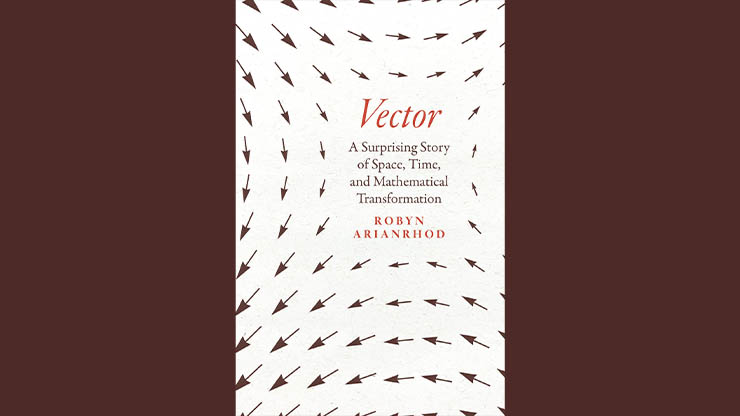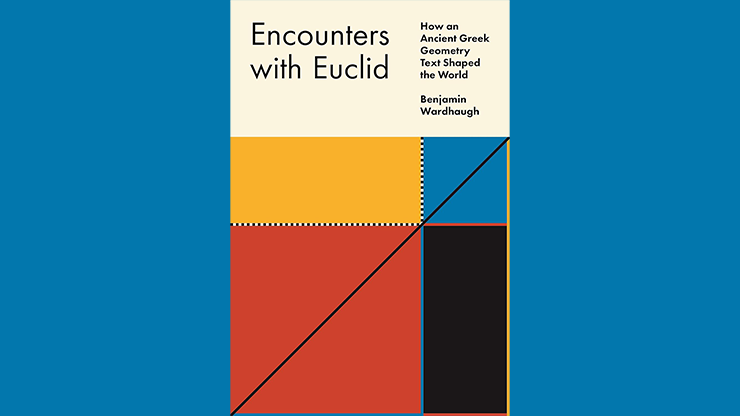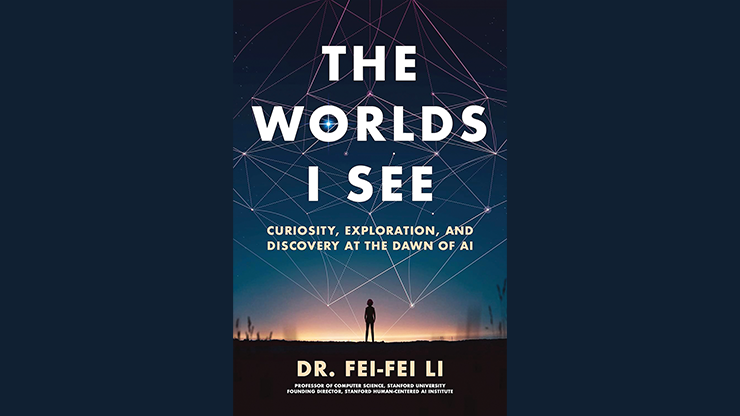A Self-help Book for Aspiring Mathematicians
Mathematica: A Secret World of Intuition and Curiosity. By David Bessis. Translated by Kevin Frey. Yale University Press, New Haven, CT, May 2024. 344 pages, $30.00.

David Bessis first published Mathematica: Une aventure au coeur de nous-mêmes in 2022 through French publishing house Éditions du Seuil. Now, two years later, it has been translated by Kevin Frey and released in English under the title Mathematica: A Secret World of Intuition and Curiosity.
Mathematica is primarily a self-help book and thus exhibits the characteristic features of that genre. The tone is proselytizing and the claims are extravagant. Bessis writes long sections in the second person and repeatedly assures “you,” the reader, that you have the potential to transform your mind and your life generally—and your mathematical comprehension and abilities more specifically—through the use of an astonishingly simple method that will soon be explained. In fact, this technique is so simple that no one has ever dared to write it down before — though mathematicians secretly pass it down as occult knowledge from generation to generation.
The following quotations reflect the overall tone and outlook of the text:
- “The aim of this book is to change the way you see the world.”
- “Developing good mental habits, adopting the right psychological attitude, can make you a billion [Bessis’ emphasis] times better at math. But the method for becoming good at math has never been taught in schools. You can reach it only by accident.”
- “The basic principle is simple yet revolutionary. It’s the kind of idea that almost no one thinks of because it’s too simple and it goes against our instincts. The kind of idea, precisely, that has the potential to change everything, at all levels of math learning, including the absolute beginners and the self-professed lousy at math.”
- “While the official knowledge has been transcribed in textbooks, the secret art of mathematicians has remained an oral tradition passed down from generation to generation. It reveals what no one dares write down in books because it doesn’t seem serious enough, because it’s not science, and because it resembles self-improvement too much.”
Bessis’ method comprises several components. One is the conquest of fear, both in social settings and your own mind. The social advice is that when a colleague is explaining their work to you, you should be frank about—or even exaggerate—your lack of understanding. And the personal advice is that you should allow yourself to fail in your initial attempts to understand a subject but remain persistent, like a child who falls when they first try to walk or an athlete who repeatedly practices a skill (Bessis’ analogies). This guidance is certainly sensible but not very remarkable.
However, Bessis primarily advocates for a process of consciously training one’s own mathematical intuition so that it works more effectively — an approach to mental improvement that he developed in high school and honed before his doctoral studies. He reports that this tactic has enormously improved both his mathematical abilities and his broader intellectual capacities. Bessis calls this process “System 3,” as a continuation of psychologist Daniel Kahneman’s well-known division of cognitive activities into System 1 (automatic, unconscious abilities such as vision or understanding a native language) and System 2 (problem solving and other types of conscious methodical reasoning).
The issue with this notion is that the word “intuition” and the phrase “mathematical intuition” are hopelessly vague and encompass many very different cognitive processes (Kahneman’s distinction between “System 1” and “System 2” is also problematic). I find it extremely regrettable that these descriptions have become common at all levels of scientific rigor in publications about the human mind and people who do mathematics. Bessis says completely contradictory things about intuition. Most of the time, he seems to mean “spatial visualization,” which he has practiced assiduously and performs very well. Even here, though, his usage is inconsistent. For instance, he attributes the ease with which most people can solve the problem “1 billion minus 1” to their ability to visualize the nine-digit number 999,999,999, which is not spatial visualization. At another point, Bessis declares that “[m]athematical intuition is so banal, simple, and stupid that you need a lot of self-confidence not to throw it in the trash ... The shy little voice that’s telling you that you don’t understand, that’s your mathematical intuition.” I’m not sure what to make of that “shy little voice,” but it’s certainly not visualization.
Toward the end of the book, Bessis writes that “[t]his intuition might have been primarily visual, or of an entirely different nature. In the end it doesn’t matter that much. All mathematicians approach mathematical objects intuitively, but intuitions come in many shapes and forms. My weakest point is my inability to find my way in complicated notations, to follow without stumbling reasonings that contain a lot of symbols and formulas. Entire areas of mathematics put me off because of this, especially analysis. It’s only gotten worse over time as I’ve lost patience with it.”
This statement is admirably honest; Bessis’ musings are often best when he is saying something that undermines his entire thesis, as in this case. For if Bessis himself cannot adapt his own method to analysis or number theory (which he mentions elsewhere), why should he assume that the method will allow the public to learn whatever variety of math they want? If he has no patience for analysis, why does he suppose that other people will have patience for any type of advanced math? If “mathematical intuition” is not primarily visual, why does he spend multiple chapters advocating for visualization? And why does he wait until page 216 to inform readers that different areas of math may require entirely different kinds of “intuition”?
Bessis provides only two concrete examples of his own use of mathematical intuition, and neither are very interesting. The first involves his ability to avoid being tricked by a problem that Kahneman studied. “A ball and a bat cost a total of $1.10,” he writes. “The bat costs $1 more than the ball. How much does the ball cost?” Bessis spends several pages on this scenario, explaining how you can see that the answer is 5 cents with the right kind of diagram. The second example is how he came to understand the relation between the dimensions of a vector space and the rank of a linear mapping by visualizing the vector spaces as barrels of varying size and the mappings as pipes of varying diameters.
Like many mathematicians, Bessis is under the illusion that everyone would get the same pleasure out of mathematics that he does if they could only get over their fears and inhibitions that stem from bad math teachers in elementary school. He thus makes absurd pronouncements like “Learning to write math is learning to have clear ideas. Wouldn’t it be a shame to deprive yourself of that?”
Mathematica is perhaps most usefully read as an intellectual autobiography. Bessis has an unusual mind, which he has examined with careful introspection over the course of many years. He has put himself through some odd mental exercises and vividly describes some of his more atypical experiences.
Bessis devotes individual chapters to three great mathematicians—William Thurston, René Descartes, and Alexander Grothendieck—who he claims wrote about their mental methods in similar ways to himself. These are among the best chapters in the book, though they are marred by a hectoring tone. Decartes, Grothendieck, and even Albert Einstein maintained that they had no special abilities, just a good method of thought. Bessis quotes Einstein’s assertion that “I have no special talent. I am only passionately curious.” He writes charmingly about this, noting that “When I was fifteen, I hated this quote from Einstein. To me it sounded phony, insincere, like a supermodel saying that what really counts is inner beauty.” However, the more mature Bessis urges readers to seriously consider this and other comparable pronouncements by Descartes and Grothendieck. This direction is not very convincing, and Bessis cannot actually maintain the attitude. In fact, he is very much prone to hero worship and carefully lists all of the prizes that his idols have won each time he introduces them. In the end, he admits that “[p]roving theorems like those of Tom Hales and Maryna Viazovska is obviously not within reach of everyone.” Hmm, so much for the idea that you too can be a great mathematician if you conquer your fears and practice a method of mental discipline so simple that no one dares to write it down.
Despite Bessis’ interest in the mental processes that influence learning and mathematical thought, he is seemingly unaware of the large body of research on this very subject by math educationalists and cognitive psychologists such as Stanislas Dehaene and Rochel Gelman. He also fails to mention any of the numerous popular and semi-popular math books that do successfully present math in understandable and engaging ways.
Additionally, one common feature of self-help books is missing: the claim that many adherents have achieved success by following the author’s method. Although Bessis has taught at both Yale University and École Normale Supérieure, he gives no indication that any of his students have successfully learned his method, or that he has tried to teach it to them.
Let me conclude by pointing out that in general, Mathematica has been favorably received and praised by distinguished mathematicians like Terence Tao, Steven Strogatz, and Hugo Duminil-Copin. My negative opinion is a minority one, and you may well find the book more congenial than I did.
About the Author
Ernest Davis
Professor, New York University
Ernest Davis is a professor of computer science at New York University's Courant Institute of Mathematical Sciences.
Related Reading



Stay Up-to-Date with Email Alerts
Sign up for our monthly newsletter and emails about other topics of your choosing.



